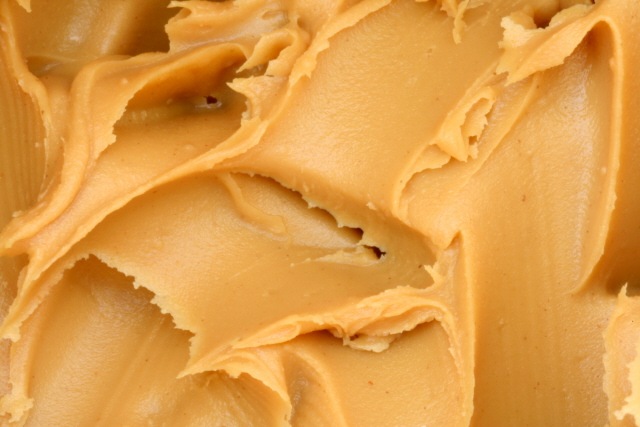
The following is a guest post provided by Nathan Lucs focusing on why people who like peanut butter should not pay the price from the minority issue.
Peanut Butter: a commonly used spread that is great with jelly in between two soft, fresh pieces of bread. It is a healthy, muscle building food and a staple in any athlete’s diet. But is it an average household substance for spreading onto sandwich bread, or a cold blooded allergen? In school districts, food allergies have been a hot topic for debate. School districts are starting to cause an injustice by outlawing specific foods like peanut butter and other common allergens to keep the few kids who are allergic to the food from having reactions. The majority of people who like peanut butter should not pay the price from the minority issue.
Peanut butter is a great staple food in a diet, especially of an athlete. The nutritional value of peanuts is second to none. It is extremely easy to use as a quick, muscle building snack between classes or as a lunchtime meal. I know how much athletics mean to the school, and we want our athletes to get the most out of their workouts. Calories and protein provided by peanuts can help do the trick. Nancy Clark and Jennifer Johnson of American Fitness support the claim that peanut butter is a great “quick and easy snack” by claiming that “peanut butter is an affordable source of calories” (Clark and Johnson). It is also a cheap alternative to all of the supplements out there for an “athlete who needs 3,000 or more calories a day” who typically has to “spend a significant amount of money fueling [themselves]” (Clark and Johnson). I found it hard to get enough calories throughout the day as an athlete before college. I needed a quick, healthy, high calorie snack in between classes. Peanut butter also has significant amounts of vitamins that promote muscle health. Clark and Johnson highlight that “Peanuts (and all nuts) are a good source of vitamin E” which help with muscle health as well as lowering the chance of “heart disease and certain kinds of cancer” (Clark and Johnson). For a non-athlete who enjoys peanut butter you may need to watch how much you take in. As long as you don’t put in more calories than you burn, peanut butter is “not fattening” and “is satisfying” (Clark and Johnson). Clark and Johnson found a Purdue University study that further shows that Peanut Butter is a satisfying snack because during the study “people whose diet included peanuts did not exceed the necessary daily calories” (Clark and Johnson). A typical non-athlete can afford to consume “five to 10 tablespoons of peanut butter per day–enough for breakfast, lunch and snacks” (Clark and Johnson). In other words, that is 2.5 to 5 servings of peanut butter per day. Peanut butter is a truly healthy and satisfying snack for anyone.
fteA snack so packed full of healthy calories and nutrients not only for athletes, but also the average student is still outlawed in school districts. In the real world, no one will be regulating the food that is around them. Why start it in school? There is not going to be anyone babying these students when they go off to college or get a job. Peanuts will most likely be in those environments after high school because like stated previously; it is a quick, easy, satisfying snack which is perfect for work or on the go. Jacobs and Griswold who wrote a section called Counterpoint: U.S. Schools Should Not Ban Foods That Cause Allergic Reactions in Points View: Allergies in School make a good point by saying that “many food allergies disappear by age five; thus, learning to deal with this condition is all-too-often a part of growing up” (Griswold and Jacobs). Isn’t part of High School trying to prepare the young men and women for the real world? The real world is not so regulated and will not adjust to a few individuals. The protection provided is at the expense of other’s freedom of eating whatever they please. The detriments of the selective prohibition of peanut butter by a school district can “fail to teach children about the necessity of taking responsibility for their conditions and coping with the cards they are dealt” (Griswold and Jacobs). This is an important step in life and should happen when there is a support system around to help, rather than in college or the “real world” when you are away from your family and close friends. It is not the job of the school to take care of this responsibility at the expense of the majority. “The responsibility for avoiding these foods lies with the parents and the afflicted child” (Griswold and Jacobs).
The few students with allergies should take responsibility for the cards that they have been dealt early in their lives because the numbers just are not in their favor. According to Griswold and Jacobs, “approximately 4 percent of children suffer severe food allergies to substances ranging from peanuts to milk, wheat, and soy products” (Griswold and Jacobs). A considerably less amount of people have food allergies compared to those that do not. It is an injustice to take away a freedom of food choice of many for the benefit of a very few. Where will this stop? It has started with peanut butter, but what about milk, wheat and soy products? Beverly Ballaro and Nancy Sprague who also wrote a section in Points of View: Allergies in School entitled Allergies in Schools: An Overview point out that there are “Common allergens, irritants” all around the school that are “capable of triggering an allergic reaction” like “dust mites, animal dander or pet hair, pollen, mold, mildew, pesticides, paint fumes, perfumes, chalk dust, scented markers, and cleaning chemicals.” Peanuts are not the only problem here; people are allergic to those things as well. Griswold and Jacobs share a similar belief by stating that “if it is unreasonable to ban milk and bread from a school because one child is allergic, then it is also unreasonable to ban peanuts, shellfish, and other common food allergens” (Griswold and Jacobs). People are concerned with how many food choices schools will be taking away beginning with peanuts. If you are truly doing this to benefit the safety of the students why not take all possible allergens out of the classroom? It doesn’t make sense to just single out peanuts, it should be all or nothing. There would be very few enjoyable things left to eat if we took out everything that is an allergen right? So this is my point. Why single out peanuts and peanut butter then? It just doesn’t make sense.
I am aware of the dangers that and allergic reaction poses for an individual with an allergy. The allergic reactions can range in intensity. I am not an insensitive person, but I do know that the “real world” has no laws against having peanuts in the US and grocery stores. As a school district are you not also creating an injustice for those who have the allergy by not preparing them for the next step in their life? The problem is being swept under a rug by a rule in place to get rid of it. The kids with allergies do not have to learn how to deal with their problem. Because of the rule, they may start expecting someone else higher up to take care of it for them.
Despite the facts provided above, peanut butter is still forbidden in select districts due to a minority. It has started with peanuts, but at what food or substance will the ban of allergens experienced by a minority end? The school needs to let the responsibility of avoiding and respecting other’s food allergies should be on the individual students to get them ready to face the outside world. To help safely do this, maybe make an allergy awareness day to teach about the dangers of allergies. Also, inform students about who has an allergy so others will respect their space when handling the allergen around them. There is a better way to do this for the sake of the student’s preparation.
———————–
references.
Ballaro, Beverly, and Nancy Sprague. “Allergies in Schools: An Overview.” Points of View:
Allergies in Schools 1 June 2011: 1. Points of View Reference Center. Web. 6 May 2013.
Jacobs, W. E., and Ann Griswold. “Counterpoint: U.S. Schools Should Not Ban Foods That Cause
Allergic Reactions.” Points of View: Allergies in Schools 1 June 2011: 3. Points of View
Reference Center. Web. 6 May 2013.
Clark, Nancy, and Jennifer H. Johnson. “Go Nuts.” American Fitness 7.1 (1999): 34-37.
EBSCOhost. Web. 6 May 2013.





Leave a Reply